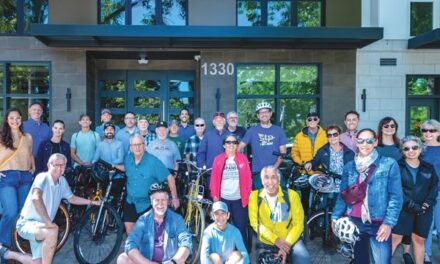We all should know there are no easy answers to California’s housing crisis. But here are a few things to keep in mind as we consider narratives circulating about where the blame belongs.
First, some encouraging news. As Gov. Gavin Newsom and Assemblymember Kevin McCarty announced, three state office buildings along Capitol Mall are being transitioned into housing.
The Employment Development Department at 800 Capitol Mall, Solar Building at 751 N St. and State Personnel Board building at 801 Capitol Mall are targeted for housing.

The sites are no longer needed for office space as the state workforce adjusts to life after COVID-19. These state properties are first in line for what planners call “adaptive reuse.” The buildings are big enough and close enough to light rail to make sense, at least in theory.
The devil is always in the details. We need to see how the makeover is handled and how the market responds. But with at least 20% of the units set to rent at below market value, Downtown could get much-needed affordable apartments close to jobs, transit and other amenities.
Let’s hope this public-private partnership works. It could be a model for similar projects in struggling downtowns around the country.
I was also interested to see an analysis of Senate Bill 9, which allows homeowners to split their lots and build up to four units in neighborhoods previously zoned single-family residential.
Advocates on both sides predicted a big impact. Some saw a major win for zoning reform to deliver more options to the market. Others claimed SB 9 was a death blow for single-family neighborhoods.
Wrong and wrong. A report by the Terner Center for Housing Innovation at UC Berkeley says neither prediction was correct. Some of the state’s largest cities, Sacramento included, received only a few applications for lot splits or new units. Others saw zero applications.
As the Terner analysis explains, “SB 9 has the potential to help solve the state’s housing shortage, particularly by creating more units in single-family neighborhoods and providing entry-level homeownership opportunities, but only if the law’s promise is realized through implementation.”
It’s too early to call SB 9 a failure. Its limited use so far, Terner reports, “may be impacted by the capacity and staff constraints that many planning departments are experiencing, alongside rising interest rates, high inflation, and ongoing supply chain/construction disruptions.” In other words, reality can derail good intentions and misplaced fears.
There are some narrative-deflating observations about housing in an important new book by Matthew Desmond, the Princeton sociology professor who won a Pulitzer Prize for his first book, “Evicted: Poverty and Profit in the American City.”
In “Poverty, by America,” Desmond continues his work, pointing out the huge disparity between mortgage interest deductions and other subsidies for homeowners and the fraction of direct housing assistance provided to low-income renters. According to 2020 figures from the U.S. Office of the Budget, the score is homeowners $193 billion, low-income renters $53 billion.
In addition to the mortgage deduction, which cost the U.S. Treasury $24.7 billion in 2020, Desmond lists deductions for state and local property taxes on owner-occupied homes ($6.4 billion), exclusions for capital gains on a home’s sale ($39.4 billion) and the exclusion for imputed rent ($123 billion).
For home ownership, the Urban-Brookings Tax Policy Center explains imputed rent as follows: “Unlike returns from other investments, the return on homeownership . . . is excluded from taxable income. In contrast, landlords must count as income the rent they receive, and renters may not deduct the rent they pay. A homeowner is effectively both landlord and renter, but the tax code treats homeowners the same as renters while ignoring their simultaneous role as their own landlords.”
Only a few countries, including the Netherlands and Iceland, tax homeowners as if they are paying themselves rent. I’m not suggesting that’s a good idea or it would fly here. But our system provides another fat incentive for home ownership because we believe it’s good for families and in the national interest.
As a fortunate homeowner, I don’t want to give up those benefits. My point is that if you are privileged enough to own where you live in a state where ownership is beyond reach for millions, why not count your blessings, enjoy those hard-earned financial benefits and try not to begrudge taxpayer support for rent subsidies and other assistance for neighbors positioned less advantageously?
Gary Delsohn can be reached at gdelsohn@gmail.com. Follow us on Facebook, Twitter and Instagram: @insidesacramento















